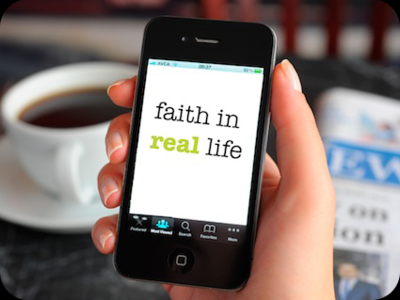 LIFE ATER THE LAKE HOUSE
LIFE ATER THE LAKE HOUSEPerplexed, Afraid, Amazed
Rev. Vernon Gramling
Decatur Presbyterian Church
April 14, 2022
Luke 24:1-12
But on the first day of the week, at early dawn, they came to the tomb, taking the spices that they had prepared. 2 They found the stone rolled away from the tomb, 3 but when they went in, they did not find the body. 4 While they were perplexed about this, suddenly two men in dazzling clothes stood beside them. 5 The women were terrified and bowed their faces to the ground, but the men said to them, “Why do you look for the living among the dead? He is not here, but has risen. 6 Remember how he told you, while he was still in Galilee, 7 that the Son of Man must be handed over to sinners, and be crucified, and on the third day rise again.” 8 Then they remembered his words, 9 and returning from the tomb, they told all this to the eleven and to all the rest. 10 Now it was Mary Magdalene, Joanna, Mary the mother of James, and the other women with them who told this to the apostles. 11 But these words seemed to them an idle tale, and they did not believe them. 12 But Peter got up and ran to the tomb; stooping and looking in, he saw the linen cloths by themselves; then he went home, amazed at what had happened.
Easter is our highest holy day but pulling Easter into real life is often difficult. Especially when our thinking about life and death is primarily in biological terms, it is hard not to think of resurrection as some kind of reanimation of a dead body. But the scriptural accounts suggest something else. The risen lord was simultaneously familiar and unfamiliar. Jesus was frequently not recognized—he was not recognized on the beach or on the road to Emmaus. With Thomas, Jesus invites Thomas to confirm his identity by touching his wounds. He is both corporeal and spiritual. On one occasion he passes through closed doors and on another he is eating fish.
PERPLEXED
In today’s scripture, the Jesus the women were expecting was missing. His body was gone. They were perplexed. This did not make sense and their first explanation was the body had been moved or stolen. Their explanations stayed within what they knew. Even though they received the dramatic statement: “Why do you look for the living among the dead? He is not here, but has risen.”, they needed to be reminded of what Jesus had said about his future. Obviously what they had been told did not make sense at the time and only as they witnessed the impossible could they consider it. To think of life and death outside of what we know is perplexing at best, then terrifying and only later, amazing.
In ordinary life, I like to tell people that the brain is like a self sealing tire. A new idea can get in. It may make sense in the hearing but very shortly afterward, it cannot be remembered. In counseling rooms, when clients are asked to reflect on what they have heard, the usable retention rate is often under ten percent. When the sessions are filmed, there is recognition and agreement with new ideas. But very shortly thereafter those same insights are sealed off. The new idea stands in conflict with what we already ‘know’—and we do not like our worlds shaken, even if it is for our good and even if it is wondrous.
Theologically, the most basic promise of the Gospel is that we are loved. Most of us crave such a promise yet we demonstrate over and over again how fiercely we hold to what we know. Receiving love requires us to give up our self sufficiency. It requires that we depend upon God. In real life that is usually too frightening to risk. So we revert to measuring, proving and comparing ourselves to establish a worth that is already given.
The Easter event, the resurrection, presents the same conundrum. Most of us fear the unknown and most of us fear death. All of our senses tell us that death is the end of us. The suggestion that is not the case might be highly desirable but it doesn’t make sense. Even when we try to imagine such a thing, we tend to imagine our afterlife in terms of the life we know. It is perplexing to think of life and death outside of our biology. Spiritually, life is not defined by our beating hearts. Life is defined as our unity with God. When we are devoted to loving, regard and mindfulness, we are devoted to God. Our corporeal lives gain meaning beyond our physical deaths.
FRIGHTENED
This new understanding of life redefines us. It is a huge faith claim that flies in the face of what we know—and it can be terrifying. It means giving up what we believed was essential to life. When the angel appeared and made his announcement, the woman were terrified. Sudden intrusions challenging what we know are usually disconcerting and frequently terrifying.
During the Great Depression life savings evaporated in a day. Though the image of investors jumping off of tall buildings turns out to be an urban myth, the sucide rate during that period was the highest in history. Suicide rates routinely climb when the economy is in a downturn. Living without the money and without the security it implicitly promised was too much for some people. It was so disconcerting, they would rather die.
Most of us fear physical dying and more still, fear a painful death. When I worked with Hospice, initially there was a fear that if you told people the truth about their prognosis, people would quit—and that some would seek death. There was a hesitancy to make painkillers readily available because they could so easily be abused. It just seemed logical that if people lost hope for a longer life or if they could foresee a painful death, they would not go on.
The same phenomena occurs is much more ordinary ways. There is nothing in our physical life that we get to keep. That includes our families as well as our possessions, reputations and positon in the world. I must add a caveat here. Saving money, protecting your family and even acquiring possessions have a place in life but it is a bridge too far when we believe we can’t live without them. They are all transitory and ultimately make a poor foundation for life. When we depend upon ourselves—our hard work, our frugality, or even our service to others, we are building our lives on the sand. No matter how important any of those things are, if they are what we live for, we will learn the hard way how easily they can be lost. Even when we know that it is true, who can bear that reality when it is forced upon us.
The terror is the realization that we have to die before we can be resurrected. Each time we lose something we felt necessary to our lives, we experience a little death. These deaths can be huge—the death of our child and/or they can be ordinary. Lynn Evans described the pain of leaving their lake house. It had served them many years. She could not imagine life after the lake house. But, she could not even discover such a life until she lost what seemed so necessary to her happiness and well being.
Unfortunately, none of us can skip Good Friday to get to Easter. There was a high price paid for us to have new life, and we must pay a high price to receive it. We all have things that we feel we cannot live without. We all have things that feel too terrible to bear. But in real life these losses, and our unexpected survival, begin to teach us what is really eternal and what really matters. That is amazing.
AMAZED
Jesus chose to face what terrifies us. He rejected the values of this world in order to show us life in a new way. He faced rejection, ridicule, physical suffering, the loss of friends and family and ultimately a slow painful death. That is almost inconceivable. He didn’t do it to be a hero. He feared it and sought relief. But in the end, without knowing the outcome, he relied upon God. It is amazing to realize Jesus chose those things in order to show us that any loss we can imagine is survivable. He taught us, by his life and death that life is about keeping Love at the center of our lives. Love survives. That is an amazing faith but if we hold fast, we not only survive, we find new life. Indeed we find what makes life eternal.
In real life, it turns out that the suicide rate for the terminally ill is lower—not higher, when people are aware of their diagnosis. Most of us survive loss in ways we could not have imagined. During the depression, most people survived. It did not seem possible but most people did find a way. The scars and the pain remain but somehow, life goes on and life can still have meaning. That is resurrection faith. That is faith in real life.
In FIRL people spoke of experiences that confirmed that faith. It was a simple as a prayer shawl that reminded them of the cloud of witnesses who cared for them and sat with them as they endured the hardships of this world. It included those ‘thin places’ where what is holy was viscerally present. It was remembering Jesus lives though he died. We need concrete examples and concrete experiences in order to learn that Jesus did not go to the cross so we wouldn’t have to go there, he went so we could join him there.
What will happen to us is above our pay grade but we live in the promise that whatever happens God is with us—and that frees us to love in the face of it all. He is risen. He is risen indeed. Let it be so.
PS: I’m adding a link to a very short story of two in utero babies asking if there is life after birth. It exposes the severe limits of our logic and our imagination.
(https://growforhumans.co.uk/


